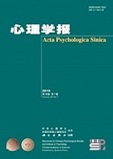|
|
Dissecting the Win-Loss Framing Effect of Intertemporal Choice: Researches from Intertemporal Choice of Money-Gain & Loss
MA Wen-Juan,SUO Tao,LI Ya-Dan,LUO Li-Zhu,FENG Ting-Yong,LI Hong
2012, 44 (8):
1038-1046.
Human choices are remarkably susceptible to the manner in which options are presented, which can be called ‘‘framing effect’’ (De Martino, Kumaran, Seymour, & Dolan, 2006). Growing bodies of studies have demonstrated that the win-loss framing effect was ubiquitous in risk decision-makings. And some other studies also found a so-called framing effect in intertemporal choice, which involved tradeoffs among costs and benefits at different points in time (Frederick, Loewenstein, & Donoghue, 2002). As a matter of fact, this is an accelerate-delay framing effect, which changes the way of time’s presentation in options through accelerating or delaying frames. However, it is still unclear whether human choices are modulated by the win-loss frame of available options in intertemporal decision-making. Therefore, the present study used intertemporal choice tasks to explore whether the win-loss framing effects existed in money-gain and money-loss intertemporal choices, and also to explore its possible inner mechanisms.
In this study, we conducted two experiments separately in situations of money-gain (Exp. a) and money-loss (Exp. b), in which subjects were forced to make choices between two amounts of money attained in different delay time in money-gain or loss fictitious scenario stories. In both situations, the intertemporal choices were phrased in win and loss frames, and moreover, the difficulty of the intertemporal choice task in the two experiments was also manipulated through different amounts of money in options. Subjects recruited in Exp. a and Exp. b were thirty (16 male, average age=21.7±1.56) and thirty-eight (14 male, average age=21.92±0.81) respectively, and both experiments were within-subject design.
The results showed that, in the money-gain situation, win-loss framing effect occurred when the intertemporal choice task was easy, but disappeared when it was difficult. Specifically, compared to lose framing, the probability of choosing to gain immediately was higher when subjects in gain framing (Exp. a). In addition, regardless of task difficulty, no framing effect existed in intertemporal choices in the money-loss situation (Exp. b).
In conclusion, the present study suggested that win-loss framing effect existed in intertemporal choices in the money-gain situation and was modulated by the tasks’ difficulty. But no framing effect existed in intertemporal choices in the money-loss situation. Therefore, win-loss frame was such an indispensable factor of intertemporal choice that should not be ignored. In turn, we should pay more attention to it as well as the contexts of intertemporal choice in the future studies.
Related Articles |
Metrics
|




